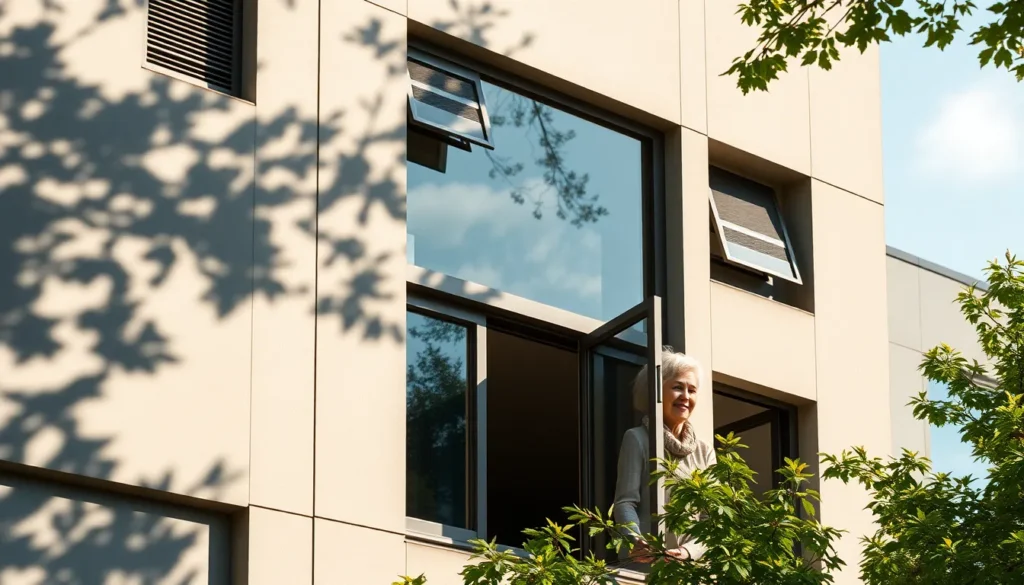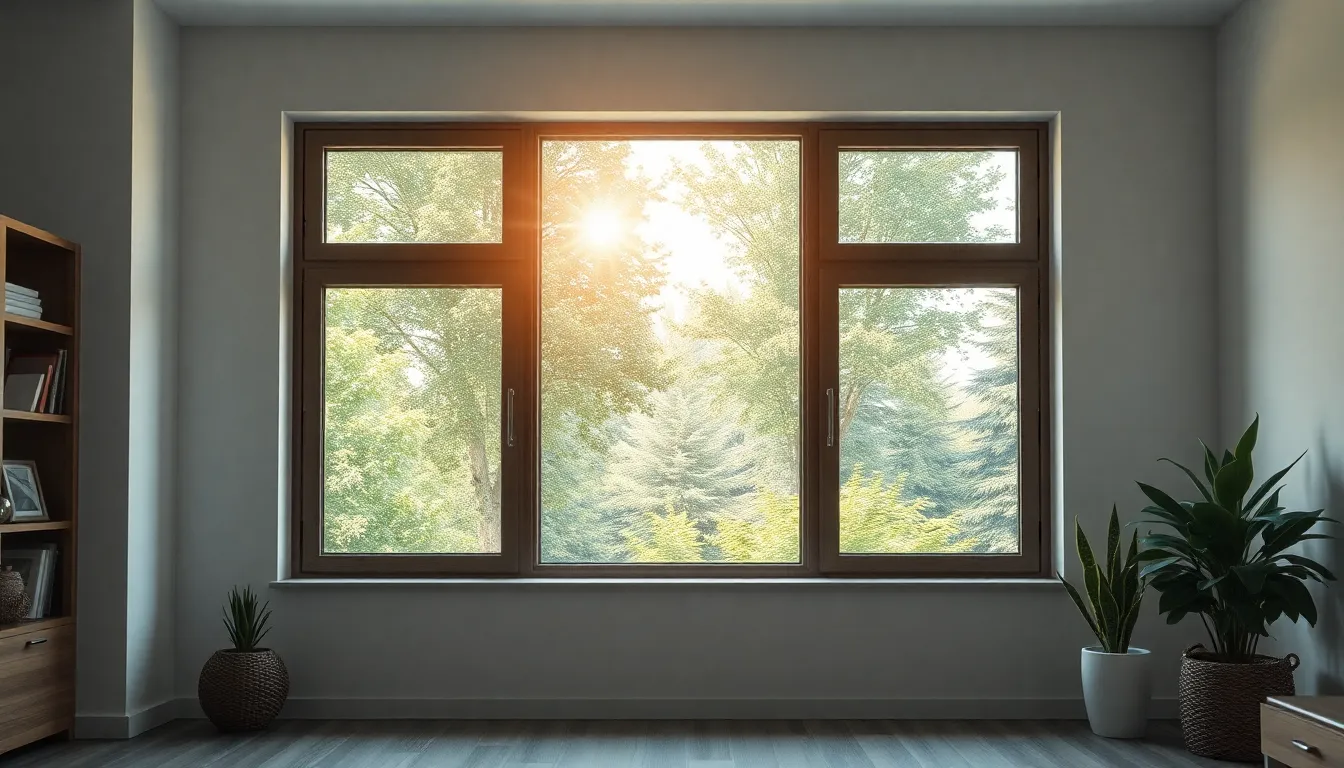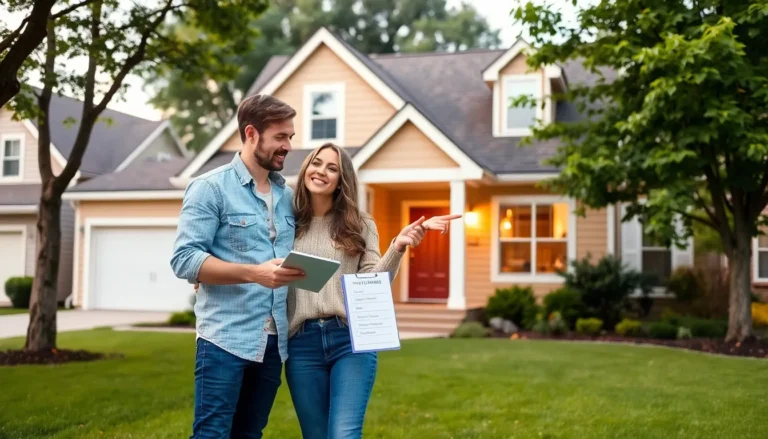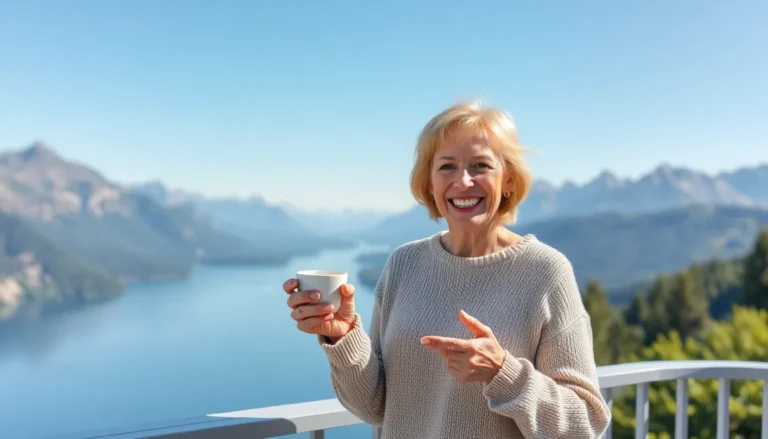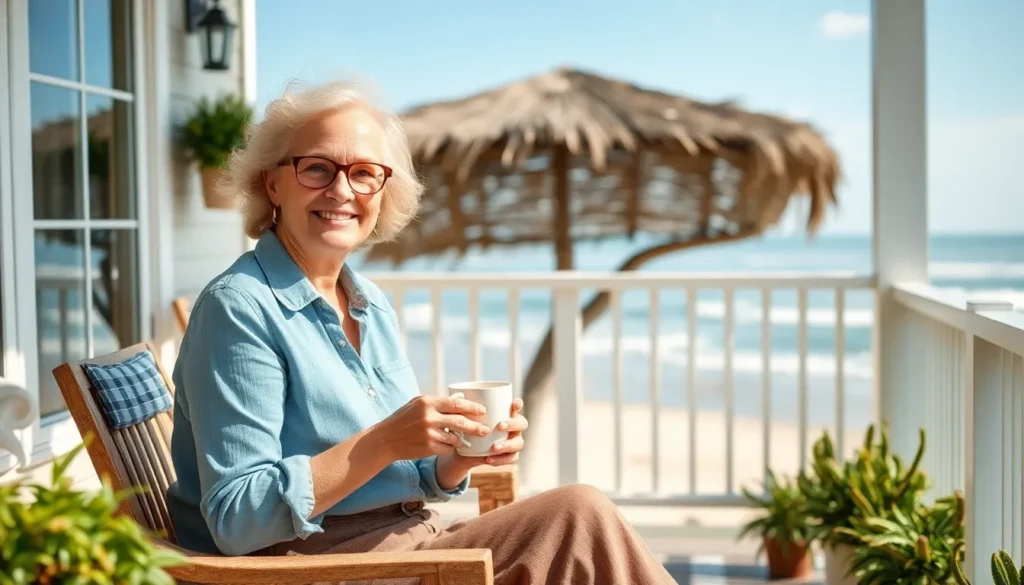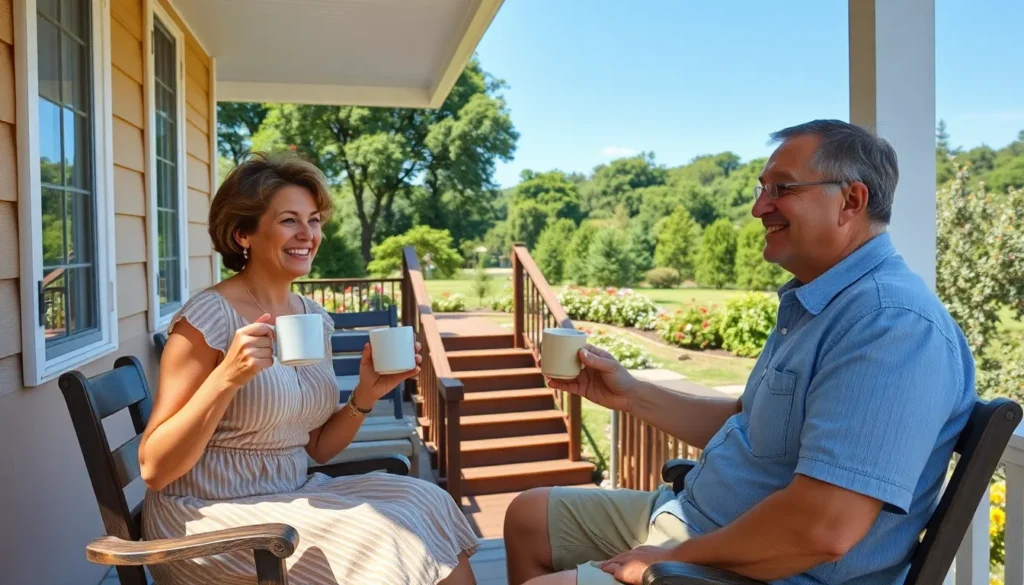In a world where energy bills seem to rise faster than the temperature, finding smart solutions is essential. Enter the passive ventilation strategy—a clever way to keep indoor spaces fresh without cranking up the AC. Imagine harnessing the power of nature itself to create a comfortable environment, all while saving a few bucks. Who wouldn’t want that?
Passive ventilation isn’t just a fancy term for opening windows; it’s a strategic approach to airflow that maximizes comfort and minimizes energy use. By understanding how air moves and using design elements to your advantage, anyone can transform their home or office into an oasis of coolness. So why not embrace this eco-friendly method? After all, the only thing better than a cool breeze is knowing you’re doing your part for the planet—and your wallet.
Table of Contents
ToggleOverview of Passive Ventilation Strategy
Passive ventilation promotes airflow to maintain indoor air quality and comfort without relying on mechanical systems. This method leverages natural forces, such as wind and thermal buoyancy, to facilitate air movement. Incorporating features like strategically placed windows, vents, and ducts enhances this approach.
Design plays a critical role in effective passive ventilation. Proper orientation and layout of a building can optimize airflow, ensuring fresh air enters while stale air exits. Location also impacts effectiveness, with buildings in windy areas benefiting from wind-driven designs.
Different techniques exist within passive ventilation strategies. Cross ventilation allows airflow between opposite openings, creating a cooling effect. Stack ventilation utilizes the rise of warm air, drawing in cooler air from lower openings. These methods work best in environments with adequate temperature differences.
Active elements complement passive techniques, enhancing overall performance. Incorporating thermal mass materials, such as concrete or brick, absorbs heat during the day and releases it at night, stabilizing indoor temperatures. Landscape features, like trees and shrubs, provide shade and influence air movement, contributing to a comfortable microclimate.
Energy efficiency emerges as a key advantage. Research shows buildings implementing passive ventilation strategies can reduce energy costs up to 50%. As awareness of sustainability grows, this technique provides a viable solution for climate-responsive design. Communities benefit by reducing reliance on fossil fuels while improving occupant comfort.
Investing in passive ventilation fosters health and well-being. Fresh air circulation reduces indoor pollutants, promoting respiratory health. Additionally, comfortable indoor conditions enhance productivity and overall quality of life.
Benefits of Passive Ventilation
Passive ventilation offers several significant advantages, making it a preferred choice for energy conservation and improved indoor environments.
Energy Efficiency
Energy efficiency stands out as a primary benefit of passive ventilation. By using natural airflow, buildings can maintain comfortable temperatures without reliance on mechanical systems, significantly reducing energy consumption. Research indicates that buildings utilizing this strategy can cut energy costs by as much as 50%. Strategic architectural design plays a crucial role in optimizing airflow, ensuring that energy efficiency is maximized. Features like operable windows, vents, and specific building orientations allow for effective harnessing of natural forces, leading to lower utility bills and reduced environmental impact.
Improved Indoor Air Quality
Improved indoor air quality is another major benefit associated with passive ventilation. Implementing this strategy ensures consistent and fresh air circulation, reducing the concentration of indoor pollutants. Stale air removal leads to healthier environments, which contribute to enhanced respiratory health for occupants. Natural ventilation works effectively to control humidity levels, minimizing mold and moisture-related issues. Additionally, this approach fosters comfortable, pleasant spaces, enhancing overall well-being and productivity while promoting a healthier lifestyle.
Design Considerations
Designing an effective passive ventilation strategy involves several key factors that influence airflow and indoor comfort. Climate and location play vital roles in determining how a building interacts with its environment, while proper building orientation significantly enhances airflow efficiency.
Climate and Location
Climate and location substantially impact passive ventilation effectiveness. Hot, humid areas benefit from designs promoting air movement to reduce heat buildup, while cooler climates benefit from features capturing solar heat. Local wind patterns influence airflow and should guide window and vent placement. For instance, in windy regions, strategically positioned openings harness natural breezes, facilitating cooling. Knowledge of seasonal weather changes ensures designs adapt to varying conditions, optimizing indoor environments year-round.
Building Orientation
Building orientation directly affects light, heat, and ventilation. Structures aligned with prevailing winds enhance cross ventilation, allowing for effective air circulation. South-facing designs maximize sunlight in colder months, while shaded areas reduce heat gain in warmer seasons. Consideration of neighboring buildings and landscape features is vital to prevent obstructions that hinder airflow. Furthermore, the roof design can influence stack ventilation, where warm air rises, creating a natural flow that replaces stale air with fresh air. A well-orientated building improves energy efficiency, ensuring comfortable indoor conditions throughout the year.
Techniques for Implementing Passive Ventilation
Effective passive ventilation strategies utilize natural elements for improved indoor air quality and comfort. They leverage various techniques to harness the benefits of airflow and thermal dynamics.
Natural Ventilation
Natural ventilation relies on outdoor air movement to refresh indoor spaces. Utilizing windows, doors, and vents allows air to flow without mechanical systems. Cross ventilation occurs when air enters through one opening and exits through another, creating a cooling effect. Leveraging prevailing winds enhances this process, helping to regulate temperatures. Periodic air exchange contributes to overall indoor air quality by reducing pollutants and balancing humidity levels. Appropriate placement and sizing of openings matter; they optimize airflow and maintain comfort throughout all seasons.
Thermal Mass Utilization
Thermal mass involves materials that absorb and store heat, regulating indoor temperatures. Implementing concrete, brick, or stone in building design provides a stabilizing effect. These materials can absorb excess heat during the day and release it at night. During cooler months, they help maintain warmth, minimizing reliance on heating systems. Effective use of thermal mass enhances overall energy efficiency, leading to significant cost savings. Building orientation can influence thermal performance; aligning structures to capture sunlight maximizes benefits while supporting passive heating strategies.
Challenges and Limitations
Passive ventilation strategies present certain challenges and limitations that require consideration. One significant challenge arises from climate variability, as regions with extreme temperatures or unreliable winds may struggle to maintain optimal indoor conditions. In areas with high humidity, relying solely on passive techniques can lead to discomfort and potential mold growth.
Building orientation also plays a critical role in effectiveness. Structures not aligned with prevailing winds may not achieve desired airflow, resulting in stagnant indoor air. This misalignment can diminish the expected benefits, prompting the need for careful site analysis during the design phase.
Another limitation involves the reliance on natural forces. During calm weather, passive ventilation systems might underperform, particularly in tightly sealed buildings. Incorporating supplemental mechanical systems can address this issue, although it may counteract the goal of minimal energy use.
Design complexity poses further challenges in ensuring effective passive ventilation. For example, improperly sized or positioned openings can hinder airflow, leading to hot or cold spots within a space. Achieving a balanced airflow requires a comprehensive understanding of airflow dynamics and effective architectural planning.
Occupant behavior can influence the success of passive strategies as well. Individuals who regularly open or close windows and vents can disrupt the intended airflow patterns. Education about the importance of maintaining these features open can help enhance overall effectiveness.
Finally, economic factors may limit the implementation of passive ventilation. Initial investment in high-quality materials and strategic design can exceed typical budgets, especially for smaller projects. Despite the long-term cost-saving benefits, upfront costs may deter some property owners from fully adopting passive ventilation solutions.
Conclusion
Passive ventilation strategies offer a sustainable way to enhance indoor comfort while significantly reducing energy costs. By harnessing natural airflow and optimizing building design, individuals can create healthier environments that support well-being. The integration of techniques like cross ventilation and thermal mass not only improves air quality but also fosters energy efficiency.
While challenges exist, such as climate variability and design complexities, the long-term benefits of passive ventilation make it a compelling choice for future building projects. As awareness of sustainability continues to grow, adopting these strategies will play a crucial role in creating resilient and efficient living spaces. Embracing passive ventilation is a step toward a greener future that prioritizes both comfort and environmental responsibility.

